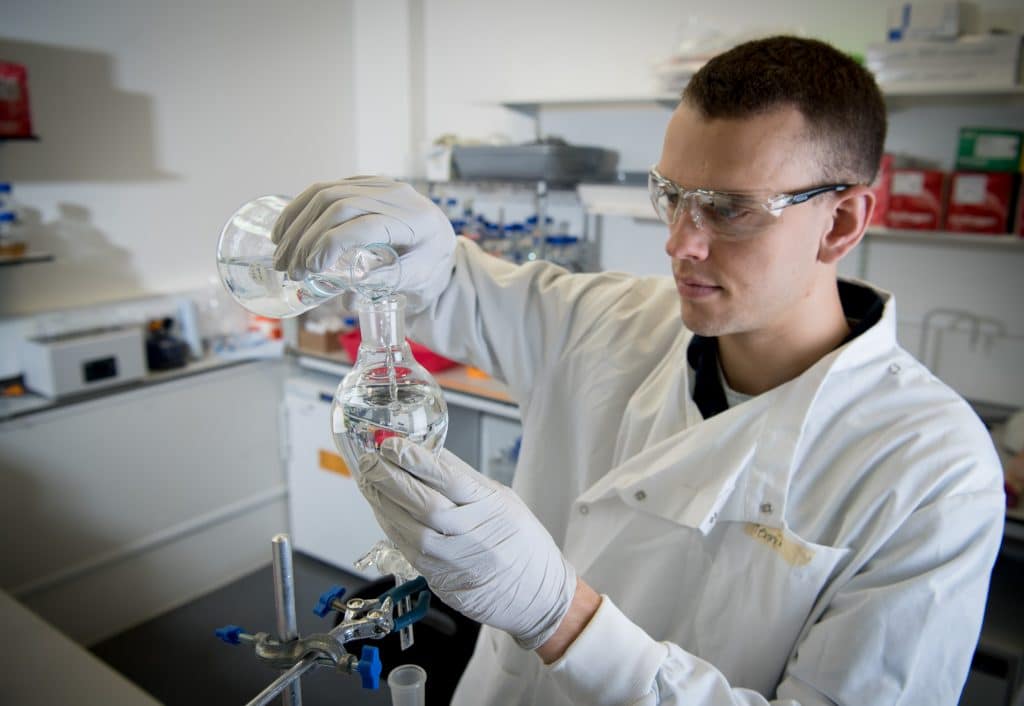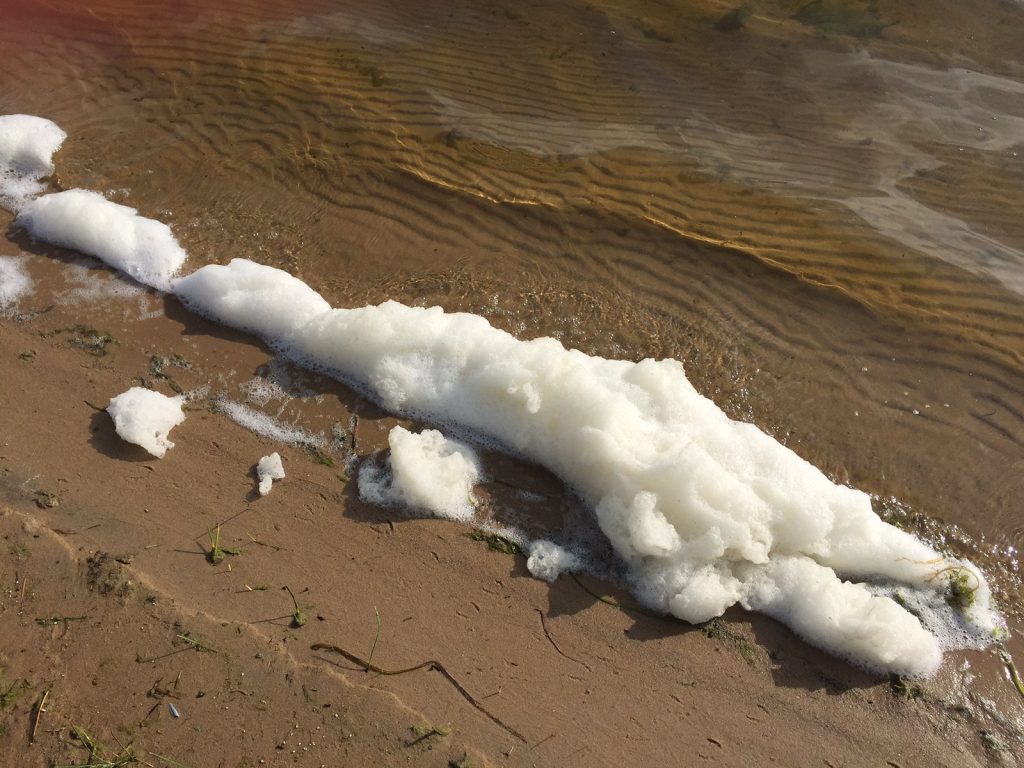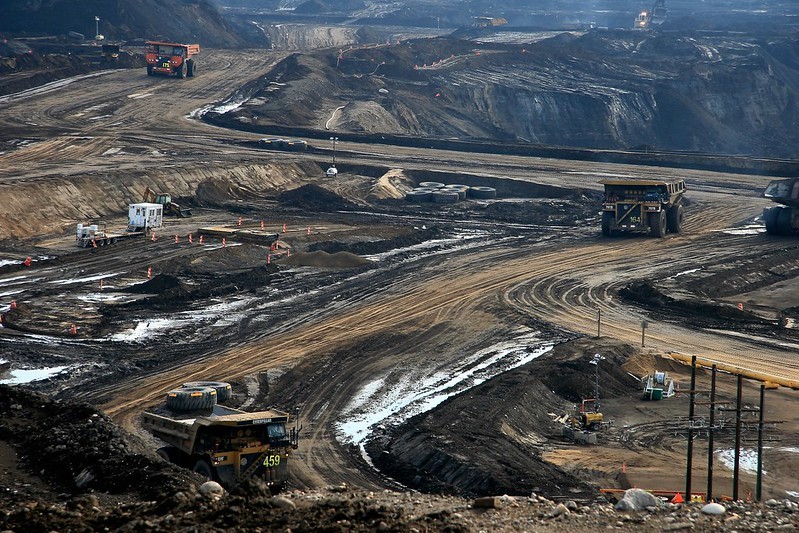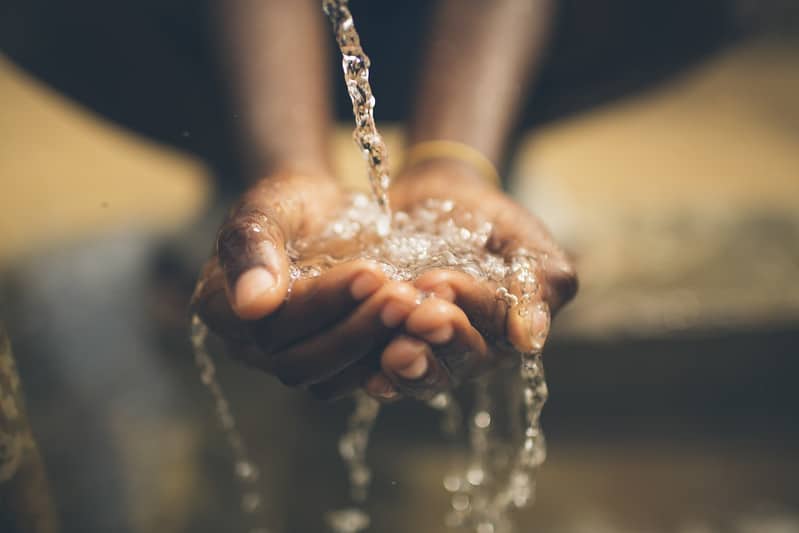Can Microbes Clean The World’s Most Polluted Waterways?
May 18, 2021
https://commons.wikimedia.org/wiki/File:Oil_Spill_deep_water_horizon.jpg
Water is arguably the most important resource in the world, and protecting it is crucial to our survival. While many synthetic biology innovations have focused on reducing water waste, the prevalence of pollutants in waterways highlights the need to shift that focus to conserving them.Water pollution can come from many sources from everyday life. According to the Environmental Working Group’s tap water database, common pollutants include lead leaching from pipes and plumbing fixtures, fertilizer chemicals such as nitrate, herbicides such as atrazine, and solvents such as 1,4-dioxane. These pollutants are associated with disrupting the reproductive systems of people and animals and increase the risk of diseases such as cancer.Cleaning contaminated water systems is a costly and grueling feat owing to their size and complexity. It could take years to decontaminate an entire system of interconnected aquifers, purification systems, storage facilities, and pipe networks. But what if a material or substance could clean waterways throughout a system? This is the role bioremediation could play in restoring already polluted waterways.
Conservation at the Source
Bioremediation is a process where microorganisms are used to break down pollutants, effectively cleaning up the contaminated site. These microbes can be specifically designed to remove pollutants without affecting other aspects of a water system like its drinkability or local wildlife. Typically, the easiest way to conserve waterways is to prevent contaminants from entering the system in the first place. This is the chosen path for London-based cleantech company Puraffinity. “It’s about trying to think of how we can take a system-wide approach to tackle the source,” says CEO and co-founder of Puraffinity, Henrik Hagemann. “We go to the point of contamination to avoid treating water multiple times.”The company has set its sights on large groups of contaminants to have the biggest possible impact. “You could spend your whole life going for the low-impact , or you could hit a few of the big groups of chemicals, and you’ll have a much bigger impact than if you went for the less dangerous ones,” Hagemann says.

Henrik Hagemann, Co-Founder and CEO of Puraffinity works in the lab on the company’s technology for removing PFAS contaminants from water systems. Image: PurafinityWith this goal in mind, Puraffinity is focusing on per- and polyfluoroalkyl substances (PFAS), a group of over 4,700 manufactured chemicals that have been found to contaminate lakes, rivers, and even drinking water. According to the U.S. National Institute of Environmental Health Sciences (NIEHS), “PFAS molecules are made up of a chain of linked carbon and fluorine atoms. Because the carbon-fluorine bond is one of the strongest, these chemicals do not degrade in the environment.” As such, these substances are dubbed “forever chemicals.” Research from NIEHS has found potential adverse health effects on children’s cognition and neurobehavioral development, the immune system, metabolism, and pregnancy.There are three key aspects to cleaning pollution from an ecosystem: detection, response, and treatment. Puraffinity is honing in on treatment, developing an adsorbent material that selectively targets PFAS compounds. The team started with a membrane-type format, but due to the membrane’s high pressure drops and difficulty to operate, the team switched to a more granular media—a pellet-like material akin to the tiny beads inside silica gel packets.These granules contain cellulose-based peptide mimics, protein-like chains designed to mimic peptides that can bind to specific targets—in this case, PFAS molecules—and separate them from the water. “We did mRNA library screens to find the molecular receptor for capture, found mimics of those peptides, and used those peptide mimics to have a product to go to market,” says Hagemann.

PFAS Foam on the shores of Van Ettan Lake, Michigan. Source: Department of Environment, Great Lakes, and Energy via Flickr.Rather than placing the pellets directly into waterways, Hagemann recommends a detection-first strategy to identify where the biggest contributors of contaminants are in a water system, such as an industrial outflow. The ideal place to install a cleanup system is as close to the source as possible. “Imagine a large steel tank where you can flow water from the top to the bottom. That’s where the pellets go inside,” he says. “When you flow water across them, they selectively grab the PFAS contaminants and keep them in the tank until it’s filled.” Hagemann says the ultimate goal is to separate the pollutants from the pellets and use them in other applications. Though the chemicals are toxic to the environment, they do have other uses. “We have people interested in reusing the concentrated chemicals because they are really useful. They're used in medical devices and also in firefighting foams. Some of these applications are saving people’s lives. Chemical companies have approached us about reusing that concentrate,” says Hagemann. Ultimately, Hagemann hopes to close the loop and create a valuable second life for these chemicals.
Protection Flowing Downstream
If contaminants are not contained upstream, cleaning up polluted water systems can become significantly more challenging. Contaminants could flow throughout the various levels of the water supply network, resulting in widespread contamination that’s more difficult to reverse. Bioremediation could offer a unique advantage in this situation.Allonnia, a spin-off company of the synthetic biology giant, Ginkgo Bioworks, is tackling downstream pollution with engineered microbes.“Allonnia is an extinct sea sponge from the Cambrian era. It’s an apt name for the company because sea sponges are the ocean’s natural filtration of particles and bacteria,” says CEO of Allonia, Nicole Richards. “It’s what Allonnia is aiming to do—use nature to clean up environmental waste.”

Nicole Richards, CEO of Allonnia, leads a team developing bio-based solutions to detect and clean up a range of toxins found in critical water resources. Image: AllonniaThe company is starting with the detection step of bioremediation by building field-deployable biosensors to identify the presence of contaminants and test their levels. For treatment, Allonnia is working on engineering microbes to biologically degrade contaminants.“We’re looking at ways to engineer the organism to only do the function it’s supposed to,” Richards says. The startup is considering a built-in kill switch for microbes that are contaminant-specific, or an on-off switch where the microorganisms are only activated in the presence of the contaminant, much like the Dehalococcoides bacteria that feed on chlorine or hydrocarbon-eating bacteria that can degrade oil.“We’re in the process of identifying the enzymes that are working to degrade the carbon-fluorine bond for PFAS, for example, and then the mechanisms where those enzymes can be added,” Richards says. Richards says that the company is looking at both ex situ applications—adding enzymes into a bioreactor—or in situ processes where a tailored organism will be active directly in a polluted water system.

Runoff from oil sands mining is a significant source of water pollution. Image: Julia Kilpatrick, Pembina Institute via Flickr.Aside from PFAS, Allonnia is working on the degradation of naphthenic acid, the main compounds responsible for the high acidity of crude oil, to reduce the toxicity of water affected by oil sands mining. The company is also working to degrade polyurethane for foam, where the polymer from foam is broken down then upcycled.To make its technology more efficient, Allonnia is tackling concentrated sites such as wastewater treatment plants. “The more concentrated the contaminant is, the easier it will be for a biological solution,” says Richards. “Spreading the organism in a wide waterway can get expensive, so we’re looking at concentrated waterways to be efficient with our biology.”
Barriers to Bioremediation
Despite its promise and potential, bioremediation can be challenging. For one, regulators tend to be wary of engineered organisms, specifically genetically modified ones, imposing strict restrictions on these organisms. To address this concern, Puraffiinity is looking into plant-based cellulose or other cellulose bases for its peptide mimics. “We would still be waiting for legislators to let us roll out genetically modified cellulose or living organisms in cellulose,” Hagemann says.Regulatory approval is a long way out, but it’s something Richards is already thinking about. “We don’t know what the organism is going to look like yet,” says Richards. “As we get closer to understanding what the technology is, that’s when we engage with regulatory authorities and start building that into the development.”Formulating a bioremediation solution also takes time, and companies may need to apply an iterative design-build-test-learn approach, one that both companies are embracing. Puraffinity will soon release its second-generation product for testing and will take into account any feedback for the next generation. Meanwhile, Allonnia is hoping to have a sellable minimum viable product (MVP) for its biosensor by 2022 and a biological degradation MVP by 2023.“We’re trying to accelerate the product development timeline with early generations,” Richards says. “We want to start getting things out into the marketplace that aren’t perfect but that we can learn from and understand how they’re developing.”Then there’s the matter of which contaminants to target and prioritize. PFAS is only one type of major contaminant, and part of Allonia’s work aims to create a database of contaminants and the corresponding enzymes that can degrade them for situations requiring rapid deployment and cleanup.Moreover, there’s the issue of how to dispose of the waste material obtained during bioremediation. Both companies are taking a cue from the environment’s cyclical nature, looking into how the captured chemicals can be reused.
Bioremediation Is Just Getting Started

Clean water is arguably the most precious resource on the planet. Pollution and climate change threaten those resources worldwide. Bioremediation could offer solutions to preventing and cleaning up water contamination. Source: USAID U.S. Agency for International Development Follow via Flickr.Bioremediation is a growing area where synthetic biology can contribute to environmental protection. By combining detection, response, and treatment into one system and scaling it across the world, biological systems can step in where other solutions have failed or not even been possible.Conserving the future of water resources starts with blocking the introduction of more pollutants into the environment. Then, it can be possible to build resilience within waterways, cleaning them and protecting them from future contaminants. “You can imagine these microbes as dormant spores. If a contaminant is released, the bacteria detect it, responds, and then eliminates it,” says Hagemann. “That’s how we can restore our waterways in the long term.”Though bioremediation is still in its infancy, the technology and mindset of bio-based solutions to chemical problems are gaining traction. The next few years will likely show just how big a role microorganisms can play in restoring the world’s most precious resources.


















